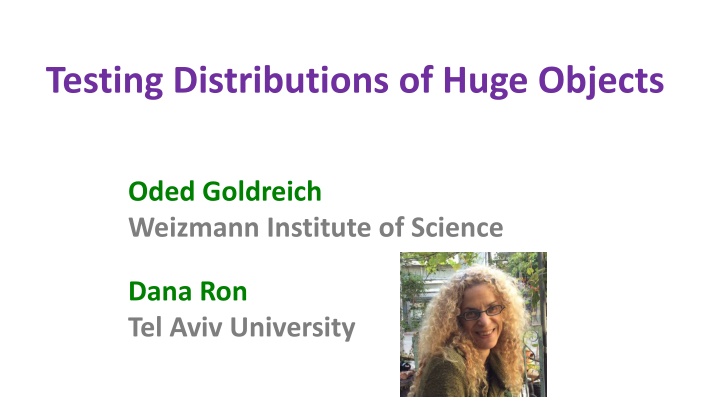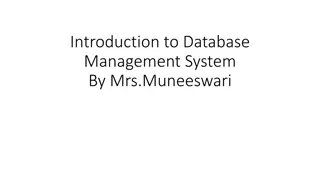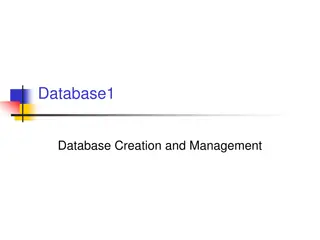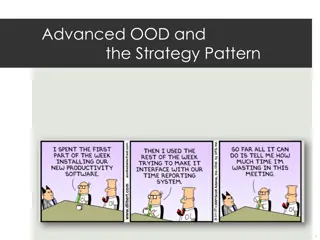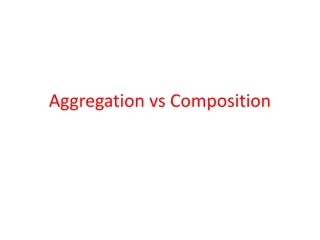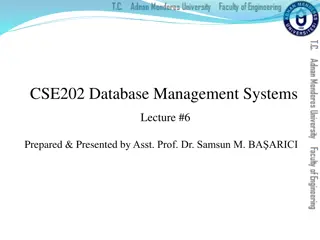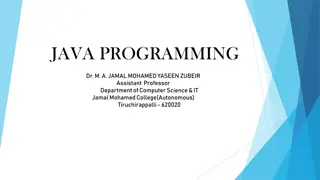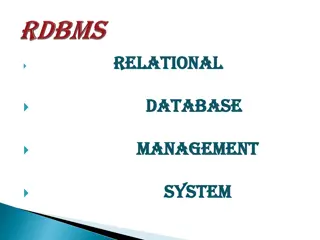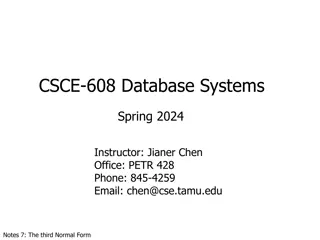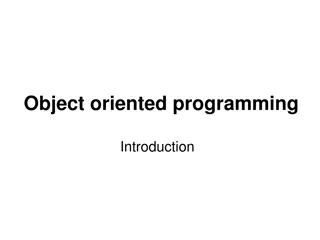Technical Considerations in Using db4o for Object-Oriented Database Systems
Performance is a crucial factor when choosing a database system. Benchmarking is essential to assess performance with different data sizes and user capacities. The Pole Position benchmark, summarized tests like writing data in bulk and querying indexed objects, and the suitability for embedded systems are key considerations for evaluating db4o. Various benchmark tests highlight the system's capabilities under different scenarios.
Download Presentation

Please find below an Image/Link to download the presentation.
The content on the website is provided AS IS for your information and personal use only. It may not be sold, licensed, or shared on other websites without obtaining consent from the author.If you encounter any issues during the download, it is possible that the publisher has removed the file from their server.
You are allowed to download the files provided on this website for personal or commercial use, subject to the condition that they are used lawfully. All files are the property of their respective owners.
The content on the website is provided AS IS for your information and personal use only. It may not be sold, licensed, or shared on other websites without obtaining consent from the author.
E N D
Presentation Transcript
Testing Distributions of Huge Objects Oded Goldreich Weizmann Institute of Science Dana Ron Tel Aviv University
Preliminaries to Property Testing PT = super-fast approximate decision. * Super-fast = in particular, cannot afford to read the object. * Approximate decision = distinguish between being in a set and being far from any object in the set. A model of PT specifies * The type of objects. * How the object is (partially) accessed (per not reading it entirely ). * A distance measure (per far ).
Testing properties of strings is property of strings Testing properties of distributions P is property of distributions Tested object is a distribution D (over ) Tested object is a string x (of length n) x D 1 ? Algorithm gets samples x D and is given distance parameter Algorithm can query x in any location and is given distance parameter After obtaining small number of samples, should decide if D P or is -far from P (Total Variation distance) After asking small number of queries, should decide if x or is -far from (normalized Hamming distance > from any y : H(x,y) = |{i : xi yi}|/n ) Length, n, of strings is LARGE Number of domain elements (| |) is LARGE but each element read at unit cost Allowed small constant failure probability
Testing properties of distributions over (large) strings P is property of distributions Tested object is a distribution D over strings (of length n, e.g. over ={0,1}nor n) Refer to model as: Distributions over Huge Objects x D 1 ? Algorithm has access to samples x D and is given After asking small number of queriesin total, should decide if D P or is -far from P (allowed small constant failure probability). Algorithm can query x in any location Distance measure: Earth mover s under (normalized) Hamming For D1 , D2over : min x,y s.t. ywx,y = D1(x), xwx,y= D2(y), wx,y H(x,y) Normalized Hamming: H(x,y) = |{i : xi yi}|/n Distance (earth mover s under Hamming) is 1/n H(0z, 1z)=1/n for every z {0,1}n-1 Take w0z,1z = D1(0z) = D2(1z) Example: D1 uniform over 0{0,1}n-1 D2uniform over 1{0,1}n-1
Some observations for DoHO model - Observation 1: Testing properties of strings, and testing properties of distributions ( standard model, as defined earlier) are special cases of DoHO. - Observation 2:Sample complexity of testing P in DoHO model Sample complexity of testing P in standard distribution testing model (butmay be smaller due to different distance measure) - Observation 3:Query complexity of testing P in DoHO model Sample complexity of testing P in DoHO model n - Observation 2+3:Query complexity of testing P in DoHO model Sample complexity of testing P in standard model n Our focus: getting (much) lower query complexity
A general bound on query complexity in DoHO Obs2+3: query complexity qP(n, ) in DoHO n times sample complexity sP,std(n, ) in standard. Are there conditions under which we can do (much) better? Say that property of distributions P over {0,1}nis closed under mapping if for every D P and everyf : {0,1}n {0,1}n, we have f(D) P where D =f(D) satisfies D (y)=D(f-1(y)). g e c f h a b d e,h h a,c,f d d,g f b a Thm 1: If P is closed under mapping, then qP(n, ) = O(sP,std(n, /2)/ )
Testing (in DoHO) previously studied properties of distributions Thm 2: Consider the following properties (parameterized by m) - The set of distributions with support size at most m,denoted P m. - The set of distributions that are m-grained (D(x)=mx/m for integer mx). - The set of distributions that are uniform over some subset of size m. These properties have query complexity poly(1/ ) O(m). Thm 3: For all three properties in Thm 2 have a lower bound on query complexity that is almost linear in m (for constant ). Furthermore, for first two it is on sample complexity. Thm 1: If P is closed under mapping, then qP(n, ) = O(sP,std(n, /2)/ ) UBs build on Thm 1 LBs build on transporting LBs from standard model [Valiant&Valiant], [GR]
Testing (in DoHO) previously studied properties of distributions (cont) Thm 5: Let D1and D2 be two distributions over strings of length n. Algorithms is given sample access to both and query access to samples. Query complexity of testing whether are identical (or -far, in DoHO model) is poly(1/ ) O(m2/3) where m is support size. Sample complexity is (m2/3). D1 x ? D2 y ? UB based on random restrictions (an idea that also appears in proof of Thm 1) LB adaptation of [Valiant]
Recap Define new model (DoHO) for property testing of distributions over long strings, where algorithm gets query access to sampled strings. x D 1 ? Present some general results bounding query complexity (total num of queries performed) Give some (almost) tight results for specific properties of interest previously studied in standard distribution-testing model Introduce new properties that arise naturally in DoHO model and study them Thanks Thanks
